Badis badis
Badis
SynonymsTop ↑
Labrus badis Hamilton, 1822; Labrus fasciata Swainson, 1839; Badis buchanani Bleeker, 1853
Etymology
Badis: probably derived from a Bangla (Bengali) name for the fish.
badis: as above.
Classification
Order: Perciformes Family: Badidae
Distribution
Native to the Ganges- River system, from the Yamuna River in Himachal Pradesh state, India, to its delta in Bangladesh. It is also known from Ganges tributaries in Nepal, while in India there are additional records from the Mahanadi River system in Chhattisgarh and Orissa states, and parts of Assam state including the city of Guwahati, Kaziranga National Park, and the Dibru River basin.
When Hamilton described this species he did so only from field notes and drawings, therefore Kullander and Britz (2002) designated a neotype in order to avoid confusion with similar-looking congeners.
Neotype locality is ‘shore of Tumapao River close to Duma village (Ganges River drainage), about 65 kilometers north-north east of Calcutta, West Bengal, India, 22°58’03″N, 88°49’49″E’.
Habitat
The neotype locality is a wide (>100m), shallow (<1m depth), slow-moving stream that flows through rice fields and does not have a great deal of marginal vegetation. The water was described as “moderately turbid” and “brownish” with a substrate of mud in which some (unspecified) aquatic plants grow.
Descriptions of other collection localities suggest the species to favour turbid waters with low water flow and growths of submersed vegetation. It is often associated with water lily beds, and in the Dibru River occurs sympatrically with B. assamensis.
Maximum Standard Length
50 – 60 mm.
Aquarium SizeTop ↑
A single pair or small group can be housed in an aquarium with a base measuring 80 ∗ 30 cm or more.
Maintenance
B. badis will thrive in a well-structured set-up with a sand or gravel substrate plus some water-worn rocks and pebbles to provide cover. Plant species that can be grown attached to the décor can be added if you wish but are not essential. Driftwood twigs, branches, floating plants and leaf litter can also be used, while filtration and lighting need not be too strong. Some cave-like structures should be included to act as potential spawning sites; many breeders use half-coconut shells or up-turned clay plant pots with drilled holes or parts of the rim removed to allow access.
Water Conditions
Temperature: 15 – 25 °C
pH: 6.0 – 7.5
Hardness: 54 – 268 ppm
Diet
Badis species are micropredators feeding on small aquatic crustaceans, worms, insect larvae and other zooplankton. In the aquarium they often refuse dried foods, and should instead be offered small live or frozen fare such as Artemia, Daphnia or glassworm.
They are somewhat shy, deliberate feeders, and it is also important to note that all species develop issues with obesity and become more susceptible to disease when fed chironomid larvae (bloodworm) and Tubifex, so these should be omitted from the diet.
Behaviour and CompatibilityTop ↑
This species is sluggish with a retiring nature, and may be intimidated or out-competed for food by larger or aggressive species. Certainly do not combine it with territorial benthic fishes unless the aquarium is very large, and never house it with other Badis species since hybridisation might occur. Also note that freshwater shrimp of the popular genera Caridina and Neocaridina may be preyed upon.
It is not a gregarious fish as such, and rival males can be quite aggressive towards one another, especially in confined spaces. In these cases only a single pair or one male and several females should be purchased, but in roomier surroundings a group can coexist provided there is space for each male to establish a territory. Well-planned placement of caves can help in this respect; do not be tempted to cluster all available spawning sites in one area, for example.
Sexual Dimorphism
Females are smaller, are less colourful with no blue pigmentation in the fins, and possess and a noticeably shorter, rounder-looking body than males. Mature males also develop extended dorsal, anal and caudal fins.
Reproduction
Members of this genus are cave-spawners that form temporary pair bonds. Other species are best omitted if you want to raise good numbers of fry although in a mature, well-furnished community a few may survive to adulthood. Either a single pair or a group of adults can be used but if using multiple males be sure to provide each with a cave to defend.
As they come into breeding condition rival males will become increasingly combative and begin to display courtship behaviour towards females entering their respective territories. During this process they display changes in colour pattern, with the body darkening to almost black and the blue fins intensifying in colour. The locking of mouths is also common, the male literally attempting to drag his partner into the cave. A receptive female will enter and spawning takes place with 30-100 eggs typical.
Post-spawning the female is ejected and the male takes sole responsibility for the eggs and fry, defending the territory against intruders and fanning the brood with his fins. Any other adult fish can be removed at this point although it is not absolutely necessary. The eggs usually hatch in 2-3 days but the fry do not become free swimming until they are 6-8 days old, and may not leave the vicinity of the cave for another week or so after that. From this point the adults (parent male included) may begin to regard them as food and are best transferred to a separate aquarium. The young fish are quite sedentary for the first few days meaning microworm is an ideal initial food, but once they are visibly swimming in the water column Artemia nauplii can be introduced to the diet.
NotesTop ↑
This species is sometimes sold under the trade name of ‘chameleon fish’ due to its ability to rapidly change colour, especially when breeding or stressed. It was originally described as Labrus badis by Hamilton but Bleeker reclassified it as Badis buchanani in 1854; he had adopted the species name ‘badis‘ as the new name for the genus and wished to avoid using a tautonym. At that time the use of tautonyms was avoided in zoological taxonomy but is now permissible under ICZN rules, meaning Badis badis is the correct combination.
Prior to 2002 the family Badidae included just five species of which only B. badis and, to a lesser extent, Badis dario (referred to as B. bengalensis by some sources) were popular in the aquarium hobby. However an extensive revision paper by Kullander and Britz published that year resulted in the erection of ten new species along with the genus Dario, into which B. dario was moved and designated the type species. Dario species are most easily distinguished from Badis by their small adult size (usually less than 25 mm), predominantly red colouration, extended anterior dorsal and pectoral fin rays in males, straight-edged (vs. rounded) caudal-fin, lack of visible lateral line, and less-involved parental behaviour. A number of additional species have subsequently been described in both genera
Some of them are not always easy to identify correctly. For example B. badis, B. chittagongis, B. ferrarisi, B. kanabos, B. khwae, B. ruber, B. siamensis, B. soraya and B. tuivaiei all exhibit a dark cleithral spot just above the base of the pectoral fin. However B. khwae, B. ruber and B. siamensis all have an additional blotch on the caudal peduncle, and B. badis can be told apart from B. kanabos by possessing a series of dark markings in the dorsal fin and/or at its base (vs. a single marking at the front of the fin) and only faint or indistinct vertical bars on the flanks (vs. a series of dark narrow bars). B. badis, B. chittagongis, B. dibruensis, B. soraya, B. tuivaiei and B. ferrarisi only differ in some morphological counts although the latter has very distinctive patterning, displaying a series of black vertical bars along the centre of the flanks.
Badids have historically been considered members of the families Nandidae or Pristolepididae and it was not until 1968 that Barlow proposed a separate grouping for them. They share some characteristics with anabantoids, nandids and channids; most notably for aquarists the typical spawning embrace in which the male wraps his body around that of the female. More recent studies have concluded that this procedure is an ancient trait inherited from a common ancestor to all these families. All Badis, Dario and Nandus species share a uniquely bifurcate hemal spine on the penultimate vertebra, and this may represent evidence for monophyly of this group. Nandidae and Badidae are separated only by differences in morphology and egg structure, and phylogenetic analyses suggest that they form a monophyletic group.
Studies have also shown that there exist several putative species groups within the genus Badis, each containing species that are most closely-related to one another. The B. badis group is distinguished by possession of a cleithral spot; the B. ruber group by a combination of cleithral spot plus dorsolateral caudal peduncle blotch; the B. assamensis group by a unique colour pattern of light and dark stripes; the B. corycaeus group by an ocellated marking at the base of the caudal fin along with a reduction in the number of sensory pores on the head; the B. autumnum group by presence of a dark median blotch on the caudal peduncle, no cleithral blotch, 12 vertical bars on the nape, flank, and caudal peduncle, and an elongate body shape; the B. singenensis group by a small size (<45 mm SL) plus presence of 2-3 black blotches on the dorsal-fin, a single anal-fin blotch, and a distinct median dark blotch surrounded by a ring of lighter pigmentation on the caudal-fin base.
There are some unique species which do not fit into any of these groups. B. kyar is separated by its relatively elongated body shape, pattern of vertical barring and band-like caudal fin marking, and may represent the sister group to either the B. ruber or B. badis/B. assamensis assemblages. B. juergenschmidti is similar to B. kyar in some respects, but the anterior vertical body bar is straight (vs. curved) and the dorsal and lower caudal fin lobe are edged in white in males (vs. no white patterning). B. britzki possesses a slender body, 21–24 pored lateral-line scales, and a colour pattern comprising 11 vertical bars plus a mosaic of black and red pigmentation on the flank and caudal peduncle, plus it lacks cleithral, opercular, or caudal peduncle blotches, or an ocellus on the caudal-fin base.
References
- Hamilton, F., 1822 - An account of the fishes found in the river Ganges and its branches.: i-vii + 1-405
An account of the fishes found in the river Ganges and its branches. - Collins, R. A., R. Britz, and L. Rüber, 2015 - Journal of Zoological Systematics and Evolutionary Research 53(4): 259-272
Phylogenetic systematics of leaffishes (Teleostei: Polycentridae, Nandidae). - Dahanukar, N., P. Kumkar, U. Katwate, and R. Raghavan, 2015 - Zootaxa 3941(3): 429-436
Badis britzi, a new percomorph fish (Teleostei: Badidae) from the Western Ghats of India. - Geetakumari, K.H. and W. Vishwanath, 2010 - Journal of Threatened Taxa 2(1): 644-647
Badis dilbruensis, a new species (Teleostei: Badidaae) from northeastern India. - Kullander, S. O. and R. Britz, 2002 - Ichthyological Exploration of Freshwaters 13(4): 295-372
Revision of the family Badidae (Teleostei: Perciformes), with description of a new genus and ten new species. - Rüber, L., R. Britz, S. O. Kullander and R. Zardoya. 2004 - Mol.ecular Phylogenetics and Evolution 32(3): 1010-1022
Evolutionary and biogeographic patterns of the Badidae (Teleostei: Perciformes) inferred from mitochondrial and nuclear DNA sequence data. - Schindler, I. and H. Linke, 2010 - Vertebrate Zoology 60(3): 209-216
Badis juergenschmidti - a new species of the Indo-Burmese fish family Badidae (Teleostei: Perciformes) from Myanmar. - Valdesalici, S. and S. Van der Voort, 2015 - Zootaxa 3986(2): 193-200
Badis laspiophilus, a new miniature addition to the ichthyofauna of West Bengal, north-eastern India, with observations on its ecology and preliminary notes on its ethology (Actinopterygii: Perciformes: Badidae). - Valdesalici, S. and S. Van der Voort, 2015 - Zootaxa 3985(3): 391-408
Four new species of the Indo-Burmese genus Badis from West Bengal, India (Actinopterygii: Perciformes: Badidae). - Vishwanath, W. and K. Shanta, 2004 - Zoos' Print Journal 19(9): 1619-1621
A new fish species of the Indo-Burmese genus Badis Bleeker (Teleostei: Perciformes) from Manipur, India.

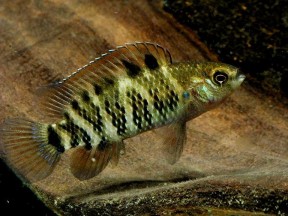


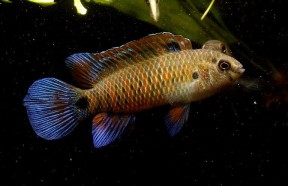

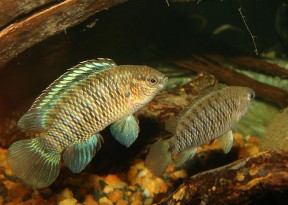

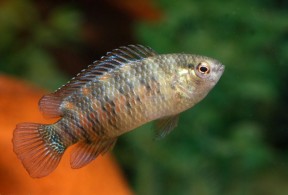
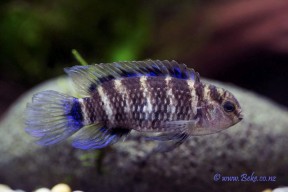
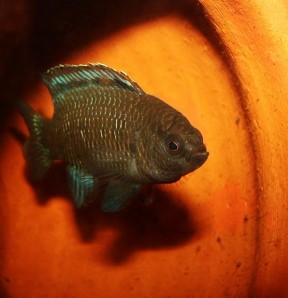
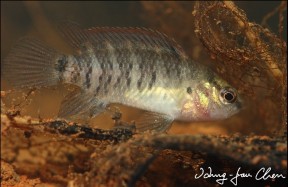
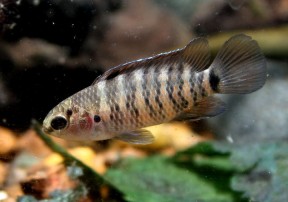


July 4th, 2015 at 1:29 am
The tank size is broken for me? it just says ‘A single pair or small group can be housed in a tank with a base measuring [dimensions[/i] or more.’ ?
July 4th, 2015 at 7:46 am
Hi, this should now be fixed? Thanks for the heads up!
July 5th, 2015 at 3:41 am
Awesome, thank you so much!